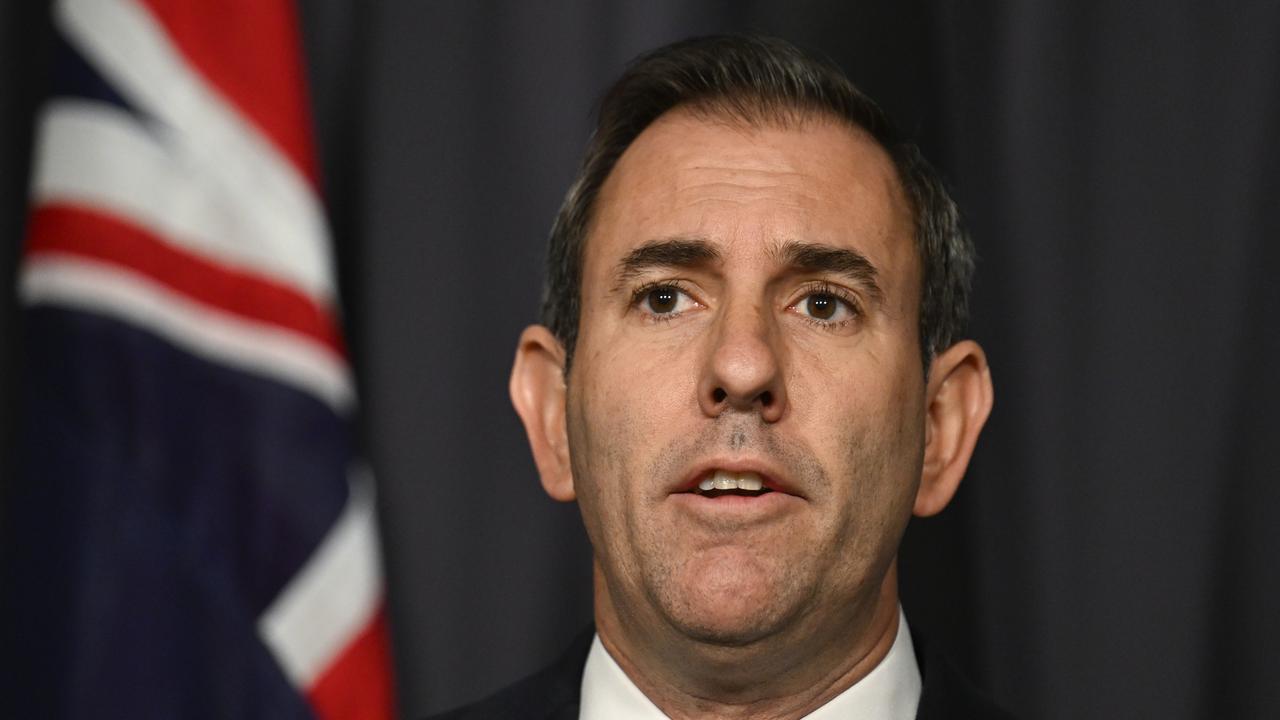Time to rotate in bank stocks
ON Wednesday the spotlight will fall on the half-year results from Commonwealth Bank, the bellwether of the financial services sector.

ON Wednesday the spotlight will fall on the half-year results from Commonwealth Bank, the bellwether of the financial services sector and arguably the most important stock on the entire local market. As the kingpin in the financial services sector, CBA's fortunes act as a litmus test for investor confidence.
After two years of 20 per cent returns on the ASX 200, long-term investors are weighing up whether to stick with some or all of the banks while a new generation of investors is increasingly convinced "it's time" to start reinvesting after hoarding their savings in low yielding cash products.
The majority of brokers seem pretty certain CBA will turn in a solid interim return this year, perhaps a lift of about 8.5 per cent to a $4.1 billion profit.
As the nation's biggest home lender, the outlook for the bank will depend heavily on the mortgage market and, during the week, CBA's supporters got a very encouraging signal - not from a bank but from the mortgage insurer Genworth, which issued stronger than expected figures with revenues growing by 25 per cent. But what might be wrong with this scenario?
To pitch the negative for a moment: if our houses are over-priced and ready to fall, as some, such as US-based economist/alarmist Harry Dent would have it, then banks too are heading for trouble.
But there is very little sense of impending doom for CBA or the wider market. Remember we may have modest growth, but we also have only modest unemployment (by global standards) and we've got 50-year low interest rates ... it's a textbook picture of a healthy home lending market.
If the mortgage market is looking as robust as the Genworth results suggest, we could reasonably expect all of the major banks to "make their numbers" if not to exceed expectations despite what the doomsayers might be suggesting. A crucial point here is that bank stock prices have recently outperformed, rather than the banks themselves. The key operational numbers at the banks have been solid but by no means spectacular.
This solid base of reasonable expenses and moderate income growth allowed the banks to push the amount they pay out in dividends ever higher: The 6 per cent plus dividend yields they recently offered (more than 7 per cent when you accounted for tax breaks on franked dividends) were irresistible as investors realised they had to get out cash if they were to make any money at all.
Looking a little harder at the numbers reveals a number of flaws.
The outstanding weakness is that credit growth was very weak and though the banks could always work on reducing expenses, it was never a sustainable pathway.
Indeed recent research from the fund manager Watermark revealed that several of the banks had not just been pushing hard on lifting dividend ratios but had also been pushing very hard in some unlikely corners to get better numbers. A little known example of this is how the banks have been redrawing the numbers of software expenses in a fashion that drives profits up faster and earlier.
At CBA, for example, software which was always booked to have a useful life of three years suddenly jumped to seven years, reducing expenses and lifting profits. One obvious reading of this practice is that in the absence of real growth, ie more people taking out loans, banks have been searching hard for ways to improve the expense line knowing that such accounting treatments would carry them over the leaner times until credit started to accelerate again.
Will people begin borrowing again? You bet they will, borrowing (or credit growth) is currently running about 3 per cent against a long-term average of above 10 per cent. It only takes a fractional lift in credit growth to lift the revenue of all the major banks. It's entirely reasonable to expect that figure to go to at least 5 per cent soon.
So, the question quickly becomes whether the banks still represent the outstanding investment option they have become over the past 12 months when a 30 per cent lift across the sector gave millions of investors the most desired of double acts - strong growth and income with low risk.
The short answer is no: you can't expect another 30 per cent lift in the banks because behind that tremendous lift last year was one factor that won't be repeated: High dividend yields seduced investors into bank stocks.
They rushed in because investors have few options in the bond market, the nearest thing to it is bank stocks.
Now, in early 2014 the rush is finished, with the bank stock prices elevated (though only slightly, with price-earnings ratios at 15 rather than the wider market's 14) and importantly, the dividend yields have been compressed - that is, they have shrunk a little, from above 6 per cent to above 5 per cent.
For some professional investors the conclusion here is to lighten off on bank stocks and CBA in particular. Currently labouring under the headline of the "10th biggest bank in the world", there have been moves to sell the stock and switch to one of its rivals that might offer better prospects in the months ahead, such as ANZ.
Certainly the issue for CBA is, can it get any better? But for most holders of the stock the continuing high dividends and the sustainable earnings of recent times will most likely be satisfactory. Similarly, Westpac, still the most conservative of the major banks and the stock that appears to offer the least risk, will continue to be supported.
It is the two smaller operators in the major banks that offer most opportunity: NAB is no longer a laggard but the option of selling the British operations is now a possibility for chief executive Cameron Clyne. And while he's mulling the future of the Clydesdale operations, the bank can offer exposure to Europe, a factor which has moved from being a problem to a potential plus in less than a year. Indeed, the sight of billions of Australian dollars flowing into euro-focused funds at Platinum Funds and Magellan Funds must be making Clyne smile from ear to ear.
However, it is ANZ that is this season's laggard, with perennial questions about the value added by its Asian operations, a point made more relevant by the recent reversals in emerging markets.
At about $29 on a 12.5 times price-earnings ratio and a dividend yield of 5.6 per cent, ANZ looks a lot better value than CBA at about $72.50 and on a 15 times price-earnings ratio and a dividend yield of barely 5 per cent.
Sure, there are better dividend yields than banks in other areas - A-REITS such as Colonial First State retail are offering 7 per cent, insurers such as IAG are offering 6.7 per cent and infrastructure stocks such as Duet are offering 8 per cent.
But, unlike banks, none of those alternatives offer a government-backed stranglehold oligopoly poised ready for a lending rebound.
In 2013, banks offered strong stock performance and solid results. This year it may well be the other way round. And for most investors that will do nicely.
James Kirby is managing editor of Eureka Report.
This article is part of the It's Time series in Eureka Report focusing on new opportunities for investors in 2014.
Trial Eureka Report free for 21 days. register now at www.eurekareport.com.au



